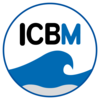Thewes-COD
Introduction
In the context of the article “The North Sea Light Climate: Analysis of Observations and Numerical Simulations”, submitted to the Journal of Geophysical Research: Oceans, five experiments were conducted. This webpage serves to make the data generated and used for that study publicly available.
The paper concerns itself with the effects of long-term changes of inorganic sediment on the light climate and phytoplankton biomass in the North Sea. Two different satellite derived data sets of inorganic sediment were used to contribute non-algal attenuation in a 3D-coupled-ecosystem model. The first data set was provided by IFREMER and the second by GlobColour. Of the five experiments, one each was forced with monthly averaged sediment, using IFREMER and GlobColour data, respectively (IFMON and GCMON). One more was conducted using annually averaged sediment (IFANN) and another one with a constant, 20-year average (IF20Y). The fifth experiment was performed without sediment forcing (NOSPM). The model runs were performed over the time period of 1998 to 2017 (20 years), with the first two years serving as spin-up.
Linear regression was performed on the raw SPM data, the model’s 10%-depth (z10), and the biomass above z10 (P10), as well as the number of days during which the bottom layer’s irradiance was above 1% (Ndays). The regression was performed on growing season averages (March-September), due to the satellite derived data being very sensitive to cloud coverages in the winter months and phytoplankton growth being comparably small during this time. The analysis focuses on IFMON and GCMON, as IFANN is an unrealistic scenario (for the lack of seasonality in SPM) that is only used for comparison and NOSPM and IF20Y serve as a negative control.
Data description
For each experiment that was described above, there is one folder, containing files named “opt_????.nc”, the “????” standing for the individual years. These files contain the model bathymetry (h), the land mask (mask_rho), the longitude (lon_rho) and latitude (lat_rho), the vertical coordinates (Cs_r and Cs_w), the individual components to attenuation specific to pure water(kw), phytoplankton (kp) and sediment (ks), the irradiance, normalised by the surface value (I0), as well is its individual components, specific to pure water (I0w), phytoplankton (I0p) and sediment (I0s), the SPM data as it is fed into the model, gridded to the ROMS grid, with data gaps filled, interpolated to a daily frequency (SPM_interp), the 1%- and 10%-depths (z01 and z10, respectively), as well as the biomass above the 1%- and 10%-depth, divided into its individual components (diatoms and small phytoplankton). This yields four variables: S101 and S110 (diatoms above 1%- and 10%-depth), and S201 and S210 (small phytoplankton above 1%- and 10%-depth). Ndays is calculated by counting the instances when z01 is non-existent.
Downloads
To download a complete folder you can use for example 'wget':
wget --recursive --no-parent --continue -nH --cut-dirs=2 \ -R "index.html*" -R "robots.txt*" \ https://service.icbm.uni-oldenburg.de/kuefo/lt_c_2000_2017/XYZ/
where XYZ is one of the folders above. This command will create a folder 'XYZ' in your current directory and download all files in our remote folder.
The in-situ data, as well as the satellite data, processed to match formats with the in-situ, are available under

